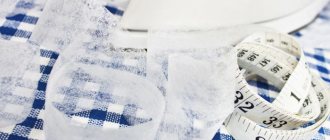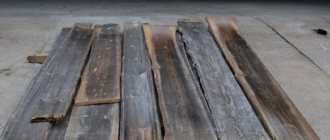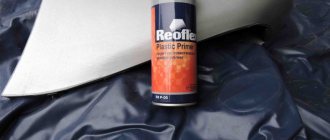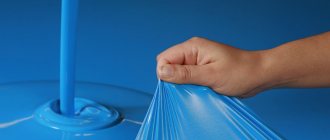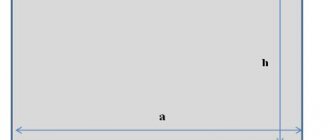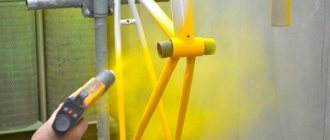An ordinary tetrahedral grater is found in almost every home. Some housewives replace it with food processors or special electric graters, but no gadget can compare in ease and speed of use with the familiar grater that our mothers, grandmothers and great-grandmothers used. The grater does not need to be assembled; washing it is quite simple: rinse it, sometimes lightly brush it, and dry it on a dish drainer. There is no need to assemble, disassemble, unwind, or connect anything to the electrical network. Can be washed in the dishwasher.
With such simplicity, a grater helps us cope with a huge number of tasks in the kitchen. Without it, you can’t cook vegetable pancakes or pancakes, you can’t make many salads, for example, Mimosa. A grater is required when we prepare soups and main courses.
And yet, we do not use the grater to 100% of its capabilities. Most often, we grate three products on a coarse and fine grater, but do not use the other two sides. And they are also very useful.
We'll tell you why each of the four sides of the grater is needed.
Need a side with large holes
Many foods are ground on this side. So, it is designed to grind:
- a variety of vegetables (potatoes, carrots, onions, etc.);
- eggs for salad;
- chocolate bar;
- apple to add to the dish according to the recipe.
Important!
Many housewives grate butter on this side. This helps to melt it faster if necessary.
Slicer
An oblong slot in a grater, one or several, is a slicer. It is designed to cut food into thin slices or circles. Using a slicer, you can chop potatoes for chips, cucumber slices for salad, zucchini, eggplant, and carrots for a beautiful vegetable pie. In general, you can chop any hard vegetables and fruits, add them to fresh salads, make casseroles, or decorate dishes.
Kitchen helpers. What devices will help you cope with workpieces Read more
Small teardrop-shaped holes
On this side, food is crushed into small pieces. This is how it differs from the previous side. Housewives use it to rub:
- various types of cheese, even with hard types, small holes will cope perfectly;
- chocolate;
- egg yolks;
- vegetables;
- potatoes, zucchini for later cooking;
- fruits for making baby puree.
If the child does not want to eat soup with carrots and onions, you can grate these vegetables on this side. Afterwards, the baby simply won’t see the smallest pieces and will eat the dish with pleasure and even ask for more.
Origin story
The main purpose of the tools, collectively called “plaster trowels,” is to create a smooth surface for finishing walls.
Previously, builders and finishers made this tool themselves from wood. For these purposes, a wooden beam was taken, from which a flat plane 1-2 cm thick was cut out with a handle located on top, but such a product could last for a fairly short period of time, since the natural material, in this case wood, quickly absorbs moisture even with temperature changes or It just might crack after it dries.
Side with “protruding” eyes
The strangest part of the grater, similar to burst bubbles that appear on the surface of the packaging film, or “protruding” eyes. Many people use it to chop garlic cloves. In addition, it allows you to quickly grate:
- hard cheeses;
- a wide variety of nuts;
- cinnamon sticks;
- crackers;
- citrus zest.
This side of the grater can also be used to peel a variety of fruits.
Fact!
When grinding ginger root, a paste of uniform consistency is obtained, which is completely free of hard fibers. After adding a spoonful of grated gruel to your tea, you don’t have to wait for it to steep.
Negative sides of ordinary graters
Needless to say, once a product runs out or becomes so small that it becomes difficult to hold in your hands, there is a risk of injury.
The severity of the injuries received is difficult to underestimate. After all, when using a grater, the fingers are the first to be damaged. Fingers are the most mobile parts of the human body. This means that healing will be extremely slow.
Below are the main negative aspects of the grater:
- it cannot be said that it is convenient to use;
- after prolonged use, not only your hands get tired, but also your neck;
- there is a high risk of injury.
Fortunately for home cooks, there is a solution on the market that will ensure not only complete abrasion of the product, but also complete hand safety.
What are oblong holes for?
This side of the housewife is used less often than others. Professional chefs assure that the benefits of it are very great. It helps to cut into rings:
- carrots, zucchini, eggplant and other vegetables to bake later;
- potatoes to later make chips from;
- onions to decorate salads and other prepared dishes with rings.
This side is ideal for slicing cabbage into thin slices. To do this faster, you need to divide the head of cabbage into 4-5 parts. Grate each one. The result is a long “straw”. The chip length is the same. After shredding, cabbage is added to borscht, salad and other dishes. You can also stew it.
Large drop-shaped grater
With its help you can chop carrots, beets, potatoes for potato pancakes, zucchini for pancakes, pumpkin to put in porridge. You can grate cheese for salads and hot dishes. Moreover, the cheese is both soft, which can be frozen for ease of grating, as well as hard and semi-hard.
Sometimes eggs, both whites and yolks, are rubbed on it.
You need to keep in mind that the pieces will turn out to be quite large, so they are not suitable for all dishes. Most often, the recipe immediately states: grate on a coarse grater - this phrase is precisely about this side.
Usually, carrots or beets are grated on a coarse grater for soup to make vegetable frying. And small ones are used to eat dishes made from raw vegetables. But in any case, this is not an immutable rule; it all depends on the taste of each cook.
Sous vide, tagine and cube grater. What equipment do chefs have? Read more
Mix the solution
In its preparation, proportions of materials are used that are similar to those for the base base.
For cement mixture:
- cement - one part;
- sand - three parts.
For cement-lime:
- cement material and slaked lime - one part each;
- clean sand - 3 parts.
In order for the grout to turn out to be of high quality, it is necessary to prepare a mortar mass of suitable fat content - a “lean” mixture does not have the necessary strength, it crumbles during the work, a very fatty mass is difficult to level, and after using a tool, stripes form on its surface. The mortar mixture should be plastic and stick slightly to the spatula blade.
It is easy to select the fat content of the solution being prepared - if it sticks strongly to the tool, add sand; if the mixture does not stick at all, add cement.
The normal mass is easy to stir, has a uniform consistency, and leaves an even, thin mark on the surface of the trowel.
How to prepare the solution correctly? It is best to act according to the following algorithm:
- the sand is sifted on a sieve, the cell size of which does not exceed 1.5 by 1.5 mm;
- the required amount of cement is poured into the container for preparing the solution, sifted sand is added, the components are mixed until smooth;
- Add water portionwise, stir the mixture constantly, achieving the required consistency.
Sponge trowel for grouting walls after plastering: types and cost
Finishing grater FIT IT 05301 (280x140x90 mm):
The sole is not quite a sponge; it uses foam rubber material - ideal for finishing touches. An excellent grater for reducing color contrasts. Manufacturer – China.
Cost - depending on the region, varies from 410 to 560 rubles.
With 2cm sponge cover (140×280):
The body of the structure is made of plastic. Country of manufacture: Poland.
Price – 430 rub.
Spongy 0.9 cm:
. A tool for smoothing a gypsum sheet to a uniform plane.
Can be purchased for 148 rubles.
Sponge plastic 1.045.34VTB (340x200x20):
The main purpose is to soften the top layer before processing with a plaster mallet. Production: Volma.
Cost - 515 rub.
Sponge, equipped with an extendable rod (340×200):
Another one is, its task is to process planes to create a homogeneous canvas. The presence of a telescopic rod allows you to easily grout walls at a height higher than human height.
Price – 2300 rub.
Only a small fraction of sponge trowels are presented here, each of which is designed for high-quality construction and finishing work. You can purchase everything in bulk or individually.
When choosing a grater, consider its size. When covering a plane with many corners, transitions and bottlenecks, it is better to purchase a compact version (140x280). A long grater (120×1200) is suitable for large open areas. For hard-to-reach places, it is better to buy one with a long holder.
Thus, plastering work is a rather labor-intensive, but not too complicated process. Almost any beginning builder can master it. All you need is a little patience, practice and, of course, the right construction tools.
With the right approach, at the end of the process you will see beautiful, smooth walls, ready for further processing. Now the procedure for selecting a trowel and the question of how to properly grout the plaster are not so scary.
Features of carrying out work independently
Plastering walls is a complex process that is performed in several stages:
- Surface preparation. The old coating and significant defects are removed. Large potholes are filled with mortar, and bumps are removed.
- Primer. The surface is cleaned of dirt and carefully treated with a primer solution, which increases the adhesion of the wall.
- Marking and installation of beacons. Places for installing beacons are indicated on the wall. The first one is mounted at a distance of 30-50 cm from the corner. The next ones are installed after 100-150 cm. A level is used when working.
- Plastering. After mixing, the solution is applied between the beacons, after which it is tightened using a rule. When the plaster has set, the surface is treated with a trowel.
Having certain knowledge and skills, you can do the plastering of walls yourself. The main thing to remember is the rules for preparing the surface and applying the solution. The choice of working tool is also important.
Plaster float to smooth out any imperfections
After finishing the plastering work, we see smooth, beautiful walls that are ready for further decorative processing. I wonder how a specialist makes the surface so smooth and even? Of course, the point here is the tool that is used in the work, usually this is a construction rule, a trowel, a trowel and a plaster trowel. During work, each of this set of tools plays its own special role, but only a grater can make the surface smooth.
In theory, the construction rule sets the direction, helps remove excess mortar from the surface and form the base of the plane. A trowel and a trowel will help remove defects: lack of mortar, fine leveling of the base, while the grater is intended for fine grinding of the plaster, the result of which is a smooth surface without the slightest defect. A specialist plasterer makes certain rotational movements on the fresh mortar, thereby smoothing the surface, making it perfectly flat.
In practice, a huge number of floats of various configurations are used in repair and construction work. Each such tool is designed to perform a specific type of work, but has a common name: a grater.
Square and hexagonal graters
Every housewife has such a grater in her kitchen. On average, a grater lasts for 3-4 years, and then it is advisable to replace it. I bought similar graters from different companies and realized that it’s not worth saving on such a grater.
Cheap options bent, scratched hands, and slipped on the table. The higher quality the material from which such a grater is made, the longer it will serve you. It will not be possible to sharpen it like a knife, so a dull grater will have to be replaced.
I try to choose a grater with a non-slip handle and a special insert that prevents it from sliding on the table - this is very convenient and reduces the risk of injury.
Such graters also come in hexagonal shapes , but, to be honest, I only use 2-3 edges, so I adhere to the principle “less is more.” Some models are equipped with additional containers that easily fold into the grater itself and do not take up space. When you work with such a container, the table is clean, everything is collected in the container. It’s easy to pour the grated vegetables into a frying pan or wherever you need it, and you can also put it in the refrigerator, covering it with the lid from the set. I often grate carrots for soup and put them in the refrigerator, quick and convenient.
How is a grater different from a grater?
A trowel or, as it is also called, a trowel, is intended exclusively for applying and eliminating defects during plastering work. Thus, it is simply not possible to completely plaster the wall, achieving a smooth surface, since the tool is only suitable for leveling the base and removing excess mortar.
Compared to graters, graters have a lot of advantages:
- Diversity. Today there is a huge variety of models, so it will be easy for any consumer to find an option for their requirements and needs;
- Comfort. The successful design of the tool allows you to work for a long time without interruption;
- Durability. Using an ordinary polyurethane float you can easily plaster about a thousand square meters;
- Low price. Low cost makes plaster floats one of the most inexpensive construction devices;
- Ease. This can partly be attributed to the second point, since lightweight materials make work as comfortable and convenient as possible, without causing fatigue even after several hours of work.
What is better to use?
The choice of device for plastering walls largely depends on the finishing technique, the skill of the worker and the plan for the upcoming work. However, the best option for repair is considered to be a polyurethane plaster float, which is equally suitable for both masters and beginners in the field of finishing. The characteristics of the tool allow it to be used for a long time, which is important given the low cost of the product.
Carefully consider all the points and buy the model that is right for you for easy and high-quality repairs!
Why do you need a construction float? types of material
When carrying out repair or construction work with your own hands, you need to use a lot of tools.
Each of them has its own purpose, so at the beginning of work it is always necessary to become familiar with all the options and types of tools.
Design and scope of application
For thousands of years, all plastering tools, including trowels, were made from wood. A handle was attached to a piece of board with slightly rounded edges - and the simplest device was ready.
There were two main disadvantages of such tools:
- the grater absorbed the plaster solution and became heavy, making work difficult;
- When dried, the instrument dried out and cracked.
The polyurethane grater is similar in design to its wooden predecessor, differing from it in low hygroscopicity and increased wear resistance.
The tool is a rectangular structure cast from polyurethane. The length of the platform is 120-360 mm, width - 120-180 mm, thickness - 20-25 mm. The closed handle, reminiscent of a wooden door handle, is molded integrally with the base.
The base of the platform has edges rounded with a radius of 5 mm.
Why do you need a polyurethane grater? It is used in the following types of plastering work:
- leveling plaster during exterior finishing;
- applying a decorative plaster layer.
What does a polyurethane grater look like?
The polyurethane grater is easy to learn and use. It is used by both professional plasterers and novice home craftsmen.
